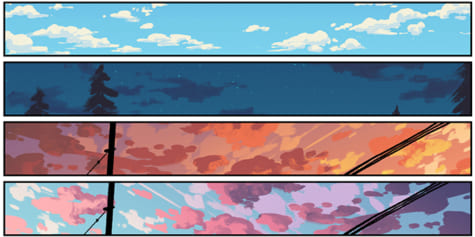Perspective drawing. A huge topic. Probably best explained with a series of drawings.
A student confessed to me the other day that whenever she went out sketching, perspective drawing was always a problem. She always sat exactly opposite her subject in order to minimise the perspective. Clever eh? I suggested we ran through some basic theories and, rather than bore her with lengthy explanations and technical diagrams, I found a couple of photographs to explain the ideas – with a French theme…
The photo on the left is classic 1-point perspective, i.e. all the vanishing lines lead to one vanishing point (more or less). The picture on the right – hmm..more complicated – is 2-point perspective, i.e. the lines vanish to two vanishing points (more or less). That has most scenarios covered. There is 3-point perspective too. Think.. looking up at sky-scrapers in New York, or down from the top of the same sky-scrapers. It all becomes a bit Marvel comics. But we’ll stick with 1-point here and I’ll come to 2-point in the next tutorial.
………………………………………………………..
I took the first photo and added some initial lines actually over the photo. It’s always good to start by drawing an EYE LEVEL line or HORIZON line in. This is at the point of your eye level, whether you’re standing in the street, sitting in a cafe or on a 3rd floor balcony. So, in the scene below, the Horizon line (drawn in green) is about 3/4 of the way up the archway in the background . As a rough guide, it’s the imaginary line where everything above it slopes down and below it slopes up. If you then follow the lines from the right hand building (drawn in blue) they should meet up at the Horizon line at the VANISHING POINT.
Of course it’s not quite that simple as this is an ancient French alleyway and all the buildings have their own quirks. The left hand building lines (drawn in red) also vanish to the Horizon line -but not exactly. So it’s not exactly 1-point perspective but unless you’re drawing railway lines going into the distance, this is more likely the situation you’ll find in reality. It’s a good guide line to bear in mind as you’re sketching.
I’ve done a step by step drawing below showing how I went about producing the final sketch.
In Step 1 (top right) you can see that I haven’t actually drawn a Horizon line in but have simplified the shapes down to a few blocks. If it helps, you can certainly draw a Horizon line/ Eye Level line in to guide you.
In Step 2, (bottom left) Once happy with the layout, I started adding more detail and tone to start giving the scene some depth. I always seem to start at the back and work forward. You may prefer left to right.
In Step 3, it all comes together and I’ve intensified the dark areas to add some drama. Really recommend plenty of contrast. You could now add some tints of colour with crayon – always looks good.
So, to recap, a light simplified sketch of your scene first. Then once your happy with the overall layout, start adding some detail and then tone. This was done with a 2B pencil which I sharpened regularly. I hope this has helped you start your next 1-point sketch with confidence.
You’ll find lots of One-point perspective tutorials on Youtube – https://www.youtube.com/results?search_query=one+point+perspective
You’ll need to look around though as some will have you yawning within a couple of minutes…. More tutorials soon.






